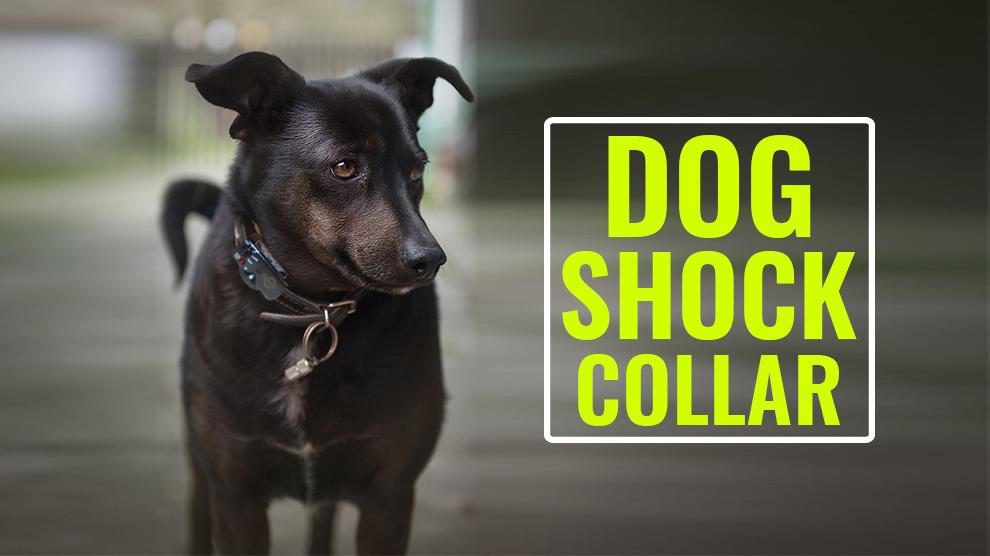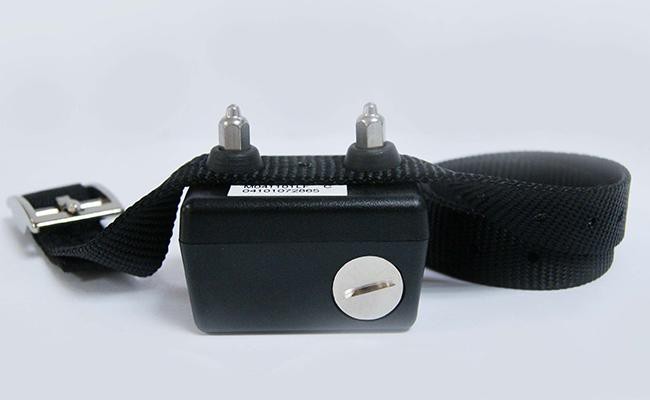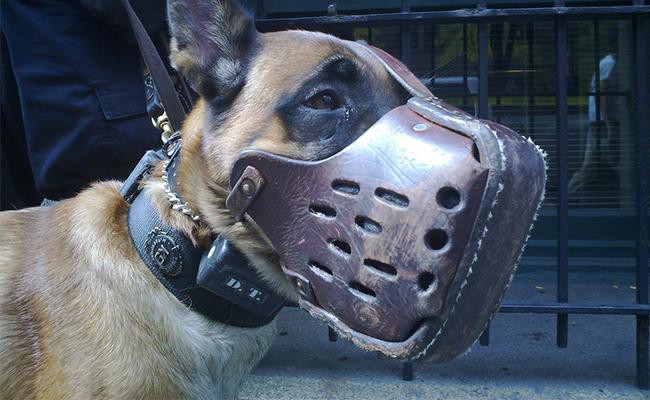Dog Pregnancy Calculator And Timeline
Dog shock collar refers to a set of collars also called electronic collars, Zap collars, remote training collars, Ecollars, and e-collars.
The main function of these collars is to deliver electrical shocks. The electrical shocks can vary in duration as well as in intensity.
The shock is delivered to the neck of the dog using a radio-controlled e-device embedded in the dog collar.
There are different shock collar models that include a vibrational or tone setting, in conjunction or as an alternative to the shock.
Other features include integration with internet mapping functions that alert a dog owner of their pet’s whereabouts and GPS to pinpoint the location of the dog.
Do Shock Collars Injure Dogs?
Yes. To some extent. Animal behavior experts conclude that it’s wise to safeguard your dog from all negative side effects caused by shock systems.
1. Prong Collars
The damage that chock and prong collars can do to canines goes beyond choking and yanking. Based on the pets’ size, how they get pulled or yanked, prong collars can lead to serious problems. They include –
- Fainting
- Damaging or causing bruising to the neck, leading to the formation of tissue
- The instant rise in pressure causing eye or brain damage
- A ruptured esophagus
- Fractured or crushed bones in the neck region
- An injured trachea, with complete or partial asphyxiation
- Serious injury to the vagus, damaging the functioning of important organs, including the kidneys, spleen, bladder, liver, lungs, and the heart
- Complete or partial hind or forelimb paralysis
- Intervertebral disc protrusion
Dogs who are choked or yanked may become fearful, aggressive, and resentful.
Positive training methods and real fences are the best alternatives. They are much more efficient.
2. Shock Collar Fence
Harsh “training” devices including the prong collars, electric fences, anti-barking systems rely on negative reinforcement and strict punishment.
These products keep them under constant fear of being painfully or electrically shocked for normal behavior including moving ahead, jumping onto surfaces, barking, or crossing invisible lines.
Positive and effective training methods in which dogs enjoy their training is much more recommended than negative reinforcement techniques.
3. Invisible Fences
Pets whose yards are protected with electric fences can develop aggression or fear aimed at something they believe to have caused the shock.
It could be the pet your neighbor has, the mailman, the courier person, or the street kids riding by.
Pets, especially dogs can run through these fences when running behind a pet or frightened by fireworks. They may be too fearful to cross back.
Electric fences can encourage or support dogs to escape. These dogs will most likely associate the yard and the shock meaning once they run away, the pain withers away.
The pain returns when these dogs try to come back making them register that they are punished for coming back.
Even when canines are confined or contained in a yard, these animals are still under threat from cruel humans, roaming dogs, and other animals.
To some extent, the shock collar fence helps dog thieves to get away with their catch safely.
How Do Dog Shock Collars Actually Work?
An invisible dog shock fence consists of different components. They include a prolonged collar, a transmitter, and a cable.
The cable is kept buried, marking the location in which these dogs are to be confined. The exact location of cable is marked with some flags placed in the ground.
Technicians install a transmitter near the cable, sends radio signals.
The dog’s collar features a radio receiver. This receives signals when the receiver and the dog move within an ideal distance from the cable.
The dog’s skin conducts electricity or receives a shock when he steps beyond, over, or near the buried cable.
Shock Collar Training
- Normally, a dog is encouraged to step into the “shock perimeter” so that they can receive an electric impulse.
- The dog collar makes a sound even before the pet enters the zone. Repeat this process until he clearly understands this process.
- Some of the common shock collar side-effects include whining, pacing, dropping flat on the ground, and freezing. Some dogs try to bite, panic, or yelp.
- The handler simply increases the training intensity if he finds the dog not behaving. As training progresses, the dog connects the beep sound with the electrical shock.
- The beep now signals to the dog that danger is now ready to happen. With time, most dogs stop leaning forward when they hear
- Most dog trainers walk the dog only on the leash close enough to the shock flags, pushing him away when the beep starts. After repeated training, the pet dog may move away from the flags. In their mind, both beeps and flags cause painful or annoying leash-jerks.
- Some dog trainers may use play or food to encourage their pet dog to stay put in the safe zone of the yard. At some point, your dog will try to leave the zone.
- Most dog owners simply put the shock collar and let him back into the yard. Dog enthusiasts believe that this method will help the dog manage the shock on its own and it’s totally false.
- After the dog owner is assured that his dog will never leave the unfenced zone, he will remove the flags one by one.
Shock Collar Side-Effects
The shock collar has been part of training for over many decades. These devices were dangerous and unsophisticated.
Though the collars are much safer, many experts recommend not to use them.
Before you embark on a journey to buy a shock collar for your dog, consider the different drawbacks and side-effects.
1. Dog Collar Can Be Triggered by Mistake
Any electronic device such as car battery, radio, or your mobile may trigger your pet’s collar. This will increase your dog’s aggression and stress level.
2. May Infuriate the Passerbys
A large canine that’s prevented by an electric perimeter appears like an unconditioned dog to neighbors. This can indirectly cause anxiety and fear in people.
3. Higher Percentages of Canine Running Loose
As and when a canine receives a rude shock, he will try his level best to escape from that situation. There is no interest on your dog’s part to return.
4. The Timing is crucial
If you are seen in the vicinity, he will start to fear or mistrust you. This will hamper or stop the relationship you have with your dog.
5. Malfunctioning is a real possibility
Any training collar is susceptible to malfunction just like any other electronic device. At times, it may deliver a rude, rough shock to your pet, whereas sometimes, it may stop working.
6. Associate the shock with increased aggression
The main function of this collar is to help your dog understand that a particular activity can give a shock. The dog may associate the pain with the people and turn aggressive.
There are many instances where a dog shock collar has increased hostility and aggression towards their owner itself.
7. Increases Stress and Physical Trauma
When a canine undergoes a shock, he remains unsure and fearful of his surroundings. This can, in the long run, damage the dog’s mental makeup.
8. Burns and Injury
A dog shock collar can cause severe health hazards if the system malfunctions. Some dog lovers have confirmed that the pain is unbearable at times.
Things To Consider Before Investing In A Shock Collar
Dog training collars use mild shock or vibrations to subdue a dog. The dog could be doing any of these things. Behaving aggressively or learning to walk with a dog leash.
While some of the dog shock collars can be quite expensive, the main function of these collars is to restrict your dog’s anti-social behavior.
Merits of Shock Collars
1. Affordable
An e-collar is a better substitute for a dog fence or trainer. Prices range from $30 USD to $ 300 USD depending on the functions.
2. Useful in your absence
Sock collars work well while you are busy inside the house.
3. Speedy results
Some dog owners claim that it took them just a few tries to make the dog obedient.
4. Adjustable
Most, present day, shock collars offer different modes. They offer adjustable shock level, vibration mode, or a warning sound.
Spray collars emit a foul smell irritating both you and your dog.
Demerits of Shock Collars
1. No positive reinforcement
Shock collars, never on their own, instill good behavior. They don’t reward positive behavior including obeying a command or sitting in one place.
As with any dog training, positive reinforcement such as a treat, or affection is recommended
2. Unintentional Shock
Automatic electric fences or bark collars may deliver shocks unknowingly or too often.
3. Cause Fear
Fear in pets is a dangerous trend. With this sort of training, some canines may learn to avoid situations, objects, or people they associate.
4. The Bad Side
Most dog lovers cannot digest causing severe pain or shock to their dog. Experts recommend positive reinforcement instead of shock training.





















